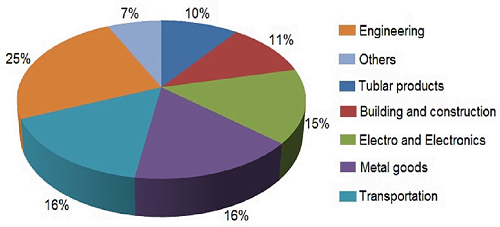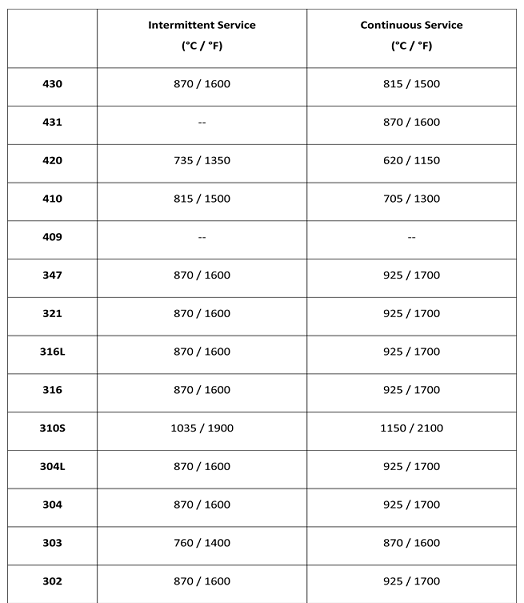Stainless Steel Suppliers, Manufacturers Stockist in India – Buy Top Quality Stainless Steel Sheets, Plates, Coils, Pipe, Tubing, Wire, Fittings, Flanges and Round Bars
- Metallica is one of the biggest stainless steel suppliers and manufacturers in India, with over 250 customers in India and overseas. We are bulk buyers and exporters of stainless steel from our factories in India and overseas (USA, Japan, Korea, Europe), and are able to give you the best price and quality just in time.
- We stock all major grades of stainless steel such as SS304/L, SS316/L, SS321, duplex and super duplex steel, special austenite stainless 310S, 347H, 317L, and 904L. We are a professional manufacturer of stainless steel piping system products, including steel pipe and tube, forged flange and fittings, butt-welding pipe fittings, elbow, tee, reducer, stub end, gaskets, fasteners, valves, sanitary fittings etc.
- Being one of the largest volume stainless steel supplier in Mumbai, we can guarantee you the lowest prices. At Metallica Metals, we believe in selling in volume and increasing our customer base across the globe, enabling us to work on low margins. We have an extensive trader network across India and the Middle East, who buy from us on a regular basis.
- In addition to traders, we have many EPC contractors, companies and end users in various industries as our customers for stainless steel. Stainless steel products are widely used for conveying oil, steam, water, gas, air at low/medium/high pressure or temperature.
Stainless Steel Product Manufacturing & Supply Range
| Product | Stainless Steel |
| Items | Pipe, Fittings, Flanges, Valves, Fasteners |
| Size | 6mm to 610mm, 1/2″ NB to 48″ NB |
| Pipe Type | Seamless, Welded, ERW, Fabricated |
| Specifications | ASTM, ASME, DIN, GOST, JIS |
| Common Grades | 201, 304, 316, 321, 347, 210, 317L, Duplex, Super Duplex, 904L |
| Fittings Type | Butt Weld, Screwed & Socket Weld, Flanges, Black, Galvanised Fittings |
| Other Fittings | Elbows, Tees, Reducers, Caps, Stub Ends, Flanges (ANSI, Table E, D and H) |
We Manufacture & Supply Complete Range of Stainless Steel Products
What is Stainless Steel?
Stainless steel is the generic name for a number of different steels used primarily for their resistance to corrosion. Stainless steels are produced by adding at least 11% chromium to steel to produce a thin passive protective layer of Cr2Q3, which promotes corrosion resistance. This is improved by further increasing the chromium content. Stainless steels are called as high-alloy steels. Due to the presence of large amounts of chromium in the range of 4 to 30%, they have high corrosion resistance than other steels. Stainless steels are classified into martensitic, ferritic and austenitic based on their crystalline structure. However, stainless steels present in the form of a combination of martensitic and austenitic steels are known as precipitation-hardened steels.
Types of Stainless Steel
- Ferritic Stainless Steels: – This group contains between 16 and 30 per cent chromium, with a maximum of 0.1 per cent carbon. These materials can be welded with a preheat of 150°C and the use of the 25 per cent chromium and 20 per cent nickel core wire electrode. Sometimes combination welds are made, with the final layers being completed with electrodes of even higher chromium content (up to 30 per cent), in order to give the surface an extremely high resistance to corrosion. A post heat at 730°C should be performed immediately after welding to prevent brittleness.
- Martensitic Stainless Steels: – Martensitic grades contain similar amounts of chromium, but more carbon than ferritic and possibly other additions such as molybdenum to increase hardenability and strength. Can be heat treated. This group contains from 11.5 to 14 per cent chromium and from 0.2 to 0.4 per cent carbon. Such steels are difficult to weld because they can form the very hard martensitic structure regardless of the cooling rate. They are known as air-hardening steels. They can be welded by preheating to around 350°C and using a 25 per cent chromium and 20 per cent nickel flux coated electrode. A post-heat of 750°C usually ensures acceptable ductility.
- Austenitic Stainless Steels: – Austenitic grades contain between 17-25% Cr, 7-20% nickel and in some instances molybdenum. They are face-centered cubic in structure, nonmagnetic and can be formed and welded more easily than ferritic. Austenite (gamma) phase field is extended to room temperature. Most corrosion resistant.
- Typical composition:
18% chromium, 8% nickel, 0.15% carbon.
Remainder: Fe (S. & P. kept below 0.045%), Ti or Nb.
- Effect of elements on properties:
The nickel is added to give toughness and may be increased to 11.5% to prevent work hardening (for rivets and fastenings). The chromium is added to give corrosion resistance. In addition titanium or niobium is often added to prevent inter-granular corrosion (weld decay) in the following proportions: Ti – 5 x C content, Nb = 10 x C content.
| Approximate melting temperature | 1420°C to 1395°C |
| Hardness | 170 Hv (water quench from 1000°C) |
| Tensile strength | Approx. 620 N/mm² |
| Yield point | Approx. 280 N/mm² |
| Mass | 7.92 g/cm³ at +20°C |
| Coefficient of linear expansion | 0.02 °C |
- How to identify:
This iron-based alloy has a characteristic silver lustre imparted to it by the amount of chromium and nickel. It is the chromium which combines with oxygen and rapidly forms a very thin oxide which is continuous and stable and impervious to further attack by the atmosphere. The thickness of this oxide film increases with the degree of polish to give a mirror finish. These steels give a dull red spark when touched on a grinding wheel.
- Corrosion:
The corrosion resistance is excellent in most environments but solutions of nitric, hydrofluoric and sulphuric acid will attack 18/8 stainless steel. These acid solutions are used to remove the oxide scale which result from strongly heating the material in air. The term used for this treatment is pickling.
- Types of Corrosion:
- Inter Crystalline Corrosion (Weld Decay) –
- Pitting Corrosion
- Stress Corrosion
- Types of Corrosion:
- Duplex Stainless Steels: – Duplex stainless steels were developed to provide the strength of ferritics, but with improved corrosion resistance. They contain about 22% Cr, 5% Ni, and possibly molybdenum. Ferrite + Austenite
- Precipitation-Hardening (PH) Stainless Steels: – Ultra high strength due to precipitation hardening.
Applications of Stainless Steel

Applications of Stainless Steel
Stainless steels are used extensively in food and drink production and the chemical and energy industries; martensitics are used for cutlery and other cutting tool manufacture. Metallica is a leading stainless steel supplier in India, to various industries such as constructions, food industry, pharmaceutical industry, petrochemical industry, automotive industry, municipal and decorative purposes, etc. We produce and supply stainless steel pipe, fittings, and flanges in various grades such as:
- TP304 TP304L TP316 TP316L TP347 TP347H TP321 TP321H TP310 TP310S
- TP410 TP410S TP403
- S31803/S32205 S32750 S32760
Properties of Stainless Steel
- Aesthetic qualities: it can be polished to a satin or mirror finish;
- “Dry corrosion” occurs to steel at higher temperatures where it oxidizes or scales up. Stainless steel is far more resistant to this than ordinary carbon steel and grades such as 310 (25% chromium 20% nickel) were specifically developed for use at high temperatures;
- Non-contamination of the liquids stainless comes into contact with, because there is no coating to break down and dissolve;
- Weight savings; as thinner sections and more innovative design structures can be used, with cost savings on foundations and platform weights;
- Many anti-corrosion coatings are fire hazards or the materials themselves have a low melting point.
Advantages of Stainless Steel
- Does not react or influence other materials.
- Used extensively in the food/catering divisions.
- Used widely in the medical world. E.g. Plates and screws to repair bones.
- Aesthetic Qualities: It can be polished to a satin or mirror finish.
- Dry Corrosion: Stainless steel is far more resistant to this than ordinary carbon steel.
- Grades such as 310 (25% chromium 20% nickel) were specifically developed for use at high temperatures.
- Non-contamination: Because there is no coating to break down and dissolve there is no contamination of liquids that stainless steel comes in contact with.
- Weight: As thinner sections and more innovative design structures can be used, giving cost savings on foundations and platform weights.
Various Grades of Stainless Steel, Metallica Deals in
| Austenitic Stainless Steels | |
| 301 | High strength for roll formed structural components |
| 304, 304L, 304H | Standard 18/8 grades |
| 310, 310S, 310H | High temperature resistant grades |
| 316, 316L, 316H | Improved resistance to pitting corrosion in chloride environments |
| 321, 321H, 347 | Stabilized grades for heavy section welding and high temperature applications |
| 904L | High resistance to general corrosion, pitting and stress corrosion cracking |
| Ferritic Stainless Steels | |
| 409 | Automotive exhaust grade – weld stabilized |
| 430, 430F | Resistant to mildly corrosive environments |
| 439 | Resistant to mildly corrosive environments – weld stabilized |
| 444 | A ferritic alternative to grade 316 / 316L – weld stabilized |
| Duplex Stainless Steels | |
| 2101 | Lean duplex – economical alternative to 304 and 316 |
| 2304 | Duplex alternative to grade 316 |
| 2205 | Standard duplex stainless steel – high resistance to pitting and stress corrosion |
| 2507 | Super duplex with very high resistance to pitting and stress corrosion |
| Martensitic Stainless Steels | |
| 410 | Standard martensitic grade for low-duty hardened applications |
| 416 | Free-machining bar grade |
| 420 | Higher hardness martensitic grade for cutlery, cutting tools and dies |
| 431 | High hardness and toughness grade, primarily for shafting |
| 440A, 440B, 440C | Very high hardness grades used in cutting tools |
| Precipitation Hardening Stainless Steel | |
| 630 | (17-4PH) High strength shafting grade |
Impact of Various Alloying Elements on the Properties of Stainless Steel
| Element | Effect on Stainless Steel |
| Chromium | Forms a passive film with oxygen that prevent the further diffusion of oxygen into the surface |
| Composition needs to contain at least 10.5% to be a stainless steel | |
| Nickel | Increases ductility and toughness. Increase corrosion resistance to acids |
| Addition creates non-magnetic structure | |
| Molybdenum | Increases pitting and crevice corrosion resistance. Increase resistance to chlorides |
| Copper | Increase corrosion resistance to sulfuric acid |
| Manganese | Substitute for nickel (200 series) |
| Titanium/Niobium | Ties up carbon and prevents inter-granular corrosion in welded zone of ferritic grades |
| Nitrogen | Increase strength and corrosion resistance in austenitic and duplex grades |
| Silicon | Improves resistance to high temperature scaling |
| Sulfur | Usually kept low except for “free-machining” grades |
| Carbon | Usually kept low. Used in martensitic grades to increase strength and hardness |
Maximum Operating Temperature of Stainless Steel
Stainless steels have good strength and good resistance to corrosion and oxidation at elevated temperatures. Stainless steels are used at temperatures up to 1700° F for 304 and 316 and up to 2000 F for the high temperature stainless grade 309(S) and up to 2100° F for 310(S).

[Image Source: From Web]
